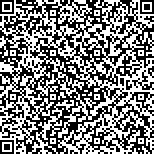| 引用本文: | 张欢,肖协文,王玉玉,于秀波.鄱阳湖流域饶河鱼类稳定同位素比值和营养级的空间变化.湖泊科学,2015,27(6):1004-1010. DOI:10.18307/2015.0603 |
| ZHANG Huan,XIAO Xiewen,WANG Yuyu,YU Xiubo.Spatial variation instable isotope signatures and trophic position of fish in Raohe River,Lake Poyang Basin. J. Lake Sci.2015,27(6):1004-1010. DOI:10.18307/2015.0603 |
|
| |
|
|
| 本文已被:浏览 9229次 下载 4849次 |

码上扫一扫! |
|
|
| 鄱阳湖流域饶河鱼类稳定同位素比值和营养级的空间变化 |
|
张欢1,2, 肖协文1,3, 王玉玉4, 于秀波1
|
|
1.中国科学院地理科学与资源研究所生态网络监测与模拟重点实验室, 北京 100101;2.中国科学院大学, 北京 100049;3.中国科学院西双版纳热带植物园, 勐腊 666303;4.北京林业大学自然保护区学院, 北京 100083
|
|
| 摘要: |
| 由于水文特征的变化和栖息生境的异质性,河流食物网结构存在着一定的空间变化. 认识人类活动对河流食物网结构空间变化的影响能够为河流生态系统的科学管理提供有效指导. 利用稳定同位素分析技术,测定枯水季节饶河不同地区初级生产者和鱼类的碳、氮稳定同位素比值(δ13C和δ15N),比较饶河下游鄱阳和中游海口河段4种常见鱼类的δ13C、δ15N值和营养级,并分析导致不同河段食物网结构差异的原因.结果表明,鄱阳与海口两个地区鱼类的δ13C值无显著差异,但δ15N值差异显著. 鱼类的δ13C值变化范围在鄱阳河段大于海口河段,鳜(Siniperca chuatsi)和贝氏(Hemiculter bleekeri)在鄱阳河段的δ15N值要显著高于海口河段,而黄颡鱼(Pelteobagrus fulvidraco)和鲫(Carassius auratus)的δ15N值在鄱阳河段却表现更低. 另一方面,除黄颡鱼外,鳜、贝氏和鲫在鄱阳河段的营养级均显著高于其在海口河段的营养级. 研究认为,由于颗粒有机物和附着藻类的δ13C值在鄱阳与海口河段没有显著差异,因而导致鱼类的δ13C值也没有明显变化. 不同生境下初级食物源δ15N值的差异及人为扰动的程度可能是影响饶河不同河段鱼类的δ15N值存在明显差异的主要原因. |
| 关键词: 鱼类 饶河 空间变化 稳定同位素分析 营养级 鄱阳湖 |
| DOI:10.18307/2015.0603 |
| 分类号: |
| 基金项目:国家自然科学基金项目(41171030, 41471088)资助. |
|
| Spatial variation instable isotope signatures and trophic position of fish in Raohe River,Lake Poyang Basin |
|
ZHANG Huan1,2, XIAO Xiewen1,3, WANG Yuyu4, YU Xiubo1
|
|
1.Key Laboratory of Ecosystem Network Observation and Modeling, Institute of Geographic Sciences and Natural Resources Research, Chinese Academy of Sciences, Beijing 100101, P.R.China;2.University of Chinese Academy of Sciences, Beijing 100049, P.R.China;3.Xishuangbanna Tropical Botanical Garden, Chinese Academy of Sciences, Mengla 666303, P.R.China;4.College of Nature Conservation, Beijing Forestry University, Beijing 100083, P.R.China
|
| Abstract: |
| Due to the flow variability and habitat heterogeneity, spatial variation of river food web structure has been well understood. However, disturbance from anthropogenic activities, especially urbanization or eutrophication, may influence the spatial dynamic in food web structure of rivers. Further understanding of this spatial variation will provide available information for scientific management of lotic ecosystems. In this study, we used stable isotope analysis to investigate the δ13C and δ15N signatures of primary food sources and fish (Siniperca chuatsi, Hemiculter bleekeri, Pelteobagrus fulvidraco, Carassius auratus) in Raohe River during the dry period. Based on δ15N values, trophic position of four predominant fish species were calculated in urbanized (Poyang Section) and less urbanized reaches(Haikou section), respectively. Differences in isotopic values and trophic position of fish were then compared to determine if these changes were related to urbanization and river habitats. Little variation in δ13C values of fish was observed between Poyang and Haikou areas, which could be reflected by the values of particulate organic matter and attached algae. However, markedly differences were examined in δ15N values of fish species from those sampling areas. δ15N values in S. chuatsi and H. bleekeri from Poyang section were significantly higher than those in Haikou section, but C. auratus and P. fulvidraco had much lower values in Poyang section. Moreover, S. chuatsi, H. bleekeri and C. auratus had higher trophic positions in Poyang section than those species in Haikou section except for P. fulvidraco. Our data suggested that δ15N values of basal energy sources and eutrophication caused by anthropogenic activities could be the important factors that affected the nitrogen isotopic signatures of fish in different areas of Raohe River. |
| Key words: Fish Raohe River spatial variation stable isotopes trophic position Lake Poyang |
|
|
|
|